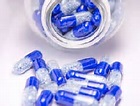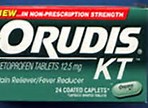There is still lots of interest in finding a cure for myotonic dystrophy through oligonucleotides. These are small molecules different than oral ingestion of a pill. Lots of interest in this type of therapy. Here is a press release from bioworld
Lilly’s ‘Avidity’ for oligos pays off for Calif.-based company


By Michael Fitzhugh
News Editor
Eli Lilly and Co. has agreed to pay privately held Avidity Biosciences LLC $20 million up front and up to $405 million per target to support development of an unspecified number of new antibody oligonucleotide conjugates for immunology and other indications. The multiyear deal, which also includes a $15 million equity investment for Avidity, opens a new front in Lilly’s embrace of oligonucleotide-based drugs, the subject of earlier deals it has struck with Dicerna Pharmaceuticals Inc., Ionis Pharmaceuticals Inc. and Noxxon Pharma AG.
Avidity’s platform, which can leverage transferrin and other transporters to deliver oligonucleotides into multiple tissue types, will allow Lilly to reach beyond hepatocytes — the most accessible domain for such medicines so far — to muscle, heart, tumor and immune cells. Andrew Adams, Lilly’s chief scientific officer for RNA therapeutics, called it “a promising avenue of research toward development of new RNA-based medicines.” With Lilly’s own multimillion-dollar R&D center just up the road from Avidity’s La Jolla, Calif., headquarters, the big pharma company’s scientists won’t even have to drive far.

Arthur Levin, Avidity’s head of R&D, told BioWorld the deal “demonstrates that the technology for oligonucleotides has reached the level of maturity where pharma is jumping back in” while validating Avidity’s technology, too. “The field has made great strides recently using targeted approaches to deliver to hepatocytes. Our technology allows us to deliver oligonucleotide payloads to cells outside of simply hepatocytes, and that’s what attracted Lilly,” he said.
The company also brings expertise in what Kent Hawryluk, Avidity’s chief business officer, told BioWorld are some of “the devilish technical details” that would make it difficult for someone to replicate its approach.
“Each one of the components, the antibody, the conjugation to the antibody, the linker, the nature of the payload, the arrangement of the molecules in space… each one of those is important to optimize,” said Levin. “If you just go in and slap an oligonucleotide payload onto an antibody, you’re probably not going to get the results that we get. That’s where the secret sauce lies, in that combination of making the appropriate modifications to each one of those systems,” he said.

Including the new equity investment by Lilly, Avidity has now raised $50 million from investors including Takeda Ventures, Alethea Capital, Alexandria Real Estate Equities, Brace Pharma, Ecor1 Capital, F-Prime Capital, Moore Venture Partners and Boxer Capital of Tavistock Group. Takeda led the company’s series B round.
The global licensing and R&D agreement with Lilly is the company’s first strategic deal and will provide it not only with support for the partnered candidate, but with nondilutive funding to help advance its muscle-focused internal pipeline.
“It turns out that muscle cells are particularly sensitive to molecules transported in on the transferrin receptor and that’s why we’ve concentrated our lead programs on muscle,” said Levin.
Founded as Avidity Nanomedicines in 2013, the company tweaked its name to reflect that its approach could do more than just deliver siRNAs, an early focus of Avidity Nanomedicines. Today, its lead internal program is focused on myotonic dystrophy type 1, a disease caused by the expansion of CTG repeats in the DMPK gene. Following humanization of an anti-human transferrin receptor antibody, Avidity team members on the project are now working to optimize its siRNA payload. “We’re in the process of scaling up the antibody and moving forward with respect to development in the very near future,” said Levin.
Avidity is also applying its antibody oligonucleotide conjugate technology to Duchenne muscular dystrophy (DMD) where the company said its approach has proved 100-fold more potent than existing oligonucleotide therapies for DMD in a mouse model of the disease, a feat it hopes will allow for reduced dose levels and reduced dosing frequency. In October, the company received an undisclosed equity investment from Cureduchenne to help advance preclinical development of its exon-skipping oligonucleotides for DMD.




